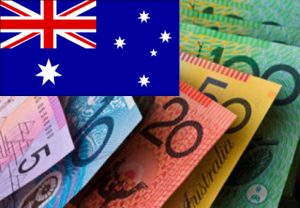Australian Dollar weighed down
16 September 2016 by News DeskAustralian Dollar was weighed down by disappointing Australian employment data for August.
 Australian Dollar was hit by generally low demand for risk-correlated currencies, according to currency specialists TorFX
Australian Dollar was hit by generally low demand for risk-correlated currencies, according to currency specialists TorFX
Despite that, the Pound to Australian Dollar fell from its Thursday highs as investors bought the Australian Dollar up from its lows, as well as selling the Pound on the latest Bank of England news.
As a result, the pair trended closer to the week’s opening levels on Friday after shedding its previous weekly gains. Investors also began to look towards risk-correlated currencies once again due to a continued slew of disappointing US data.
New Zealand Dollar (NZD) – The Pound lost around a cent in value against the New Zealand Dollar on Thursday. The volatile exchange rate now trends just below the week’s opening levels after falling from a briefly held weekly high on Thursday morning.
GBP/NZD plunged in response to the Bank of England’s (BoE) latest meeting minutes, indicating that Britain’s economic future was still uncertain and there was still a chance of further easing.
This, as well as more disappointing US data, caused investor demand for the risk-correlated New Zealand Dollar to increase slightly by Friday.
Australian Dollar weighed down
Pound Sterling (GBP) – Sterling trended lower vs most of its major rivals on Thursday as the Bank of England (BoE) set out its current outlook and forecasts for the British economy during its September policy meeting.
While the Pound was able to recover from its worst levels towards the end of the American session and hold there for most of the evening, GBP began to slip again when European markets opened on Friday morning.
During its Thursday meeting, the Bank of England (BoE) left policy frozen, stating that the aggressive easing package introduced in August had been necessary thus far. The bank expressed optimism towards Britain’s economic performance in August, but was keen to remind markets that future easing was possible as soon as November if this solid economic activity doesn’t last.
US Dollar (USD) – The Pound to US Dollar exchange rate slipped slightly on Thursday as investors sold off Sterling (then bought it back again) in response to the Bank of England’s (BoE) latest policy meeting minutes.
Sentiment towards the US Dollar was also mixed, as key US data continued to disappoint markets while Federal Reserve officials play up the health of the US economy and hint that further policy tightening will be necessary soon. However, markets have been unconvinced by this discourse due to a continued slew of disappointing US ecostats.
Adding to the pile of mounting scepticism of a possible rate hike next week was Thursday’s August retail sales report, which came in at -0.3%. Industrial and manufacturing production also came in below expectations for August, both printing at a surprisingly low -0.4%.
Euro (EUR) – The Pound to Euro exchange rate lost around a third of a cent overall during Thursday’s session, as investors showed mixed reaction to the Bank of England’s (BoE) latest policy meeting.
The Euro was relatively limp throughout the day due to a continued lack of supportive Eurozone data. The day’s most influential print was August’s Consumer Price Index (CPI) results, but these figures came in exactly as expected with the yearly score matching preliminary results of 0.2%. The monthly score came in at a low 0.1% as forecasts suggested.
These low inflation scores are likely to stoke fresh speculation that more European Central Bank (ECB) easing could be in the way, but as the ECB was surprisingly hawkish in its previous meeting some analysts are suggesting that more easing simply won’t happen. This is part of why the Euro has been able to hold its ground this week.
Canadian Dollar (CAD) – The Canadian Dollar surprisingly sprang back to life on Thursday, pushing the Pound down from a six-week-high due to a variety of factors including BoE news, poor US data and a slight increase in oil prices.
Prices of Canada’s most lucrative commodity saw a limited boost on Thursday and Friday morning due to Wednesday’s news that US oil inventory had plummeted more than expected. Refinery and pipeline problems also interfered with oil supply, slightly stimulating demand and higher prices. However, the outlook for oil prices still isn’t optimistic, with yet more oil to add to the glut expected soon from Libya’s resumed oil production.
Disclaimer: This update is provided by TorFX, a leading foreign exchange broker, its content is authorised for reuse by affiliates.
Learn more about the Australian Dollar – Contact TorFX: Get A Quote
Want to live and work Down Under? Click here for expert help: Skilled Migration to Australia
Want to get a job Down Under? Click here for expert help: How to Get a Job in Australia
Click here for expert help with travel visas: Travel Visas to Australia
Click here for tourist information about Australia: Visit Australia


